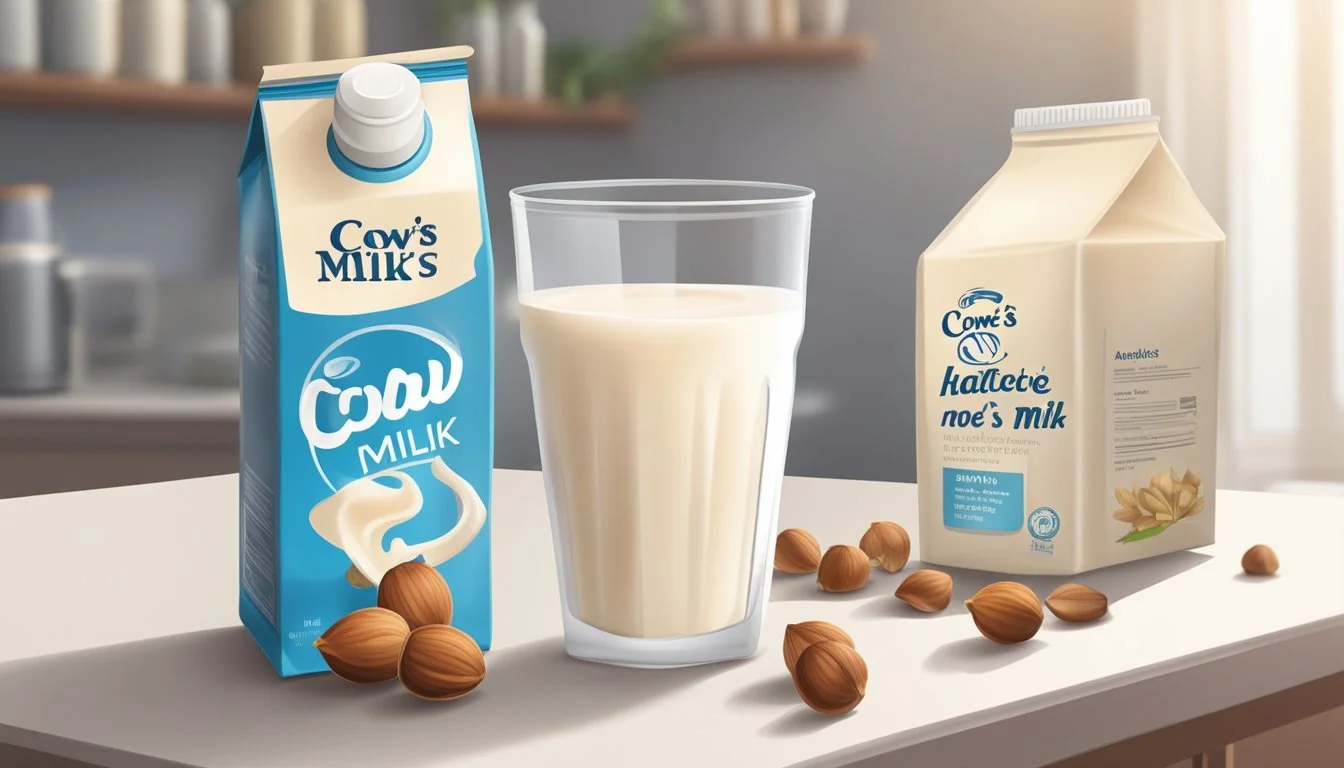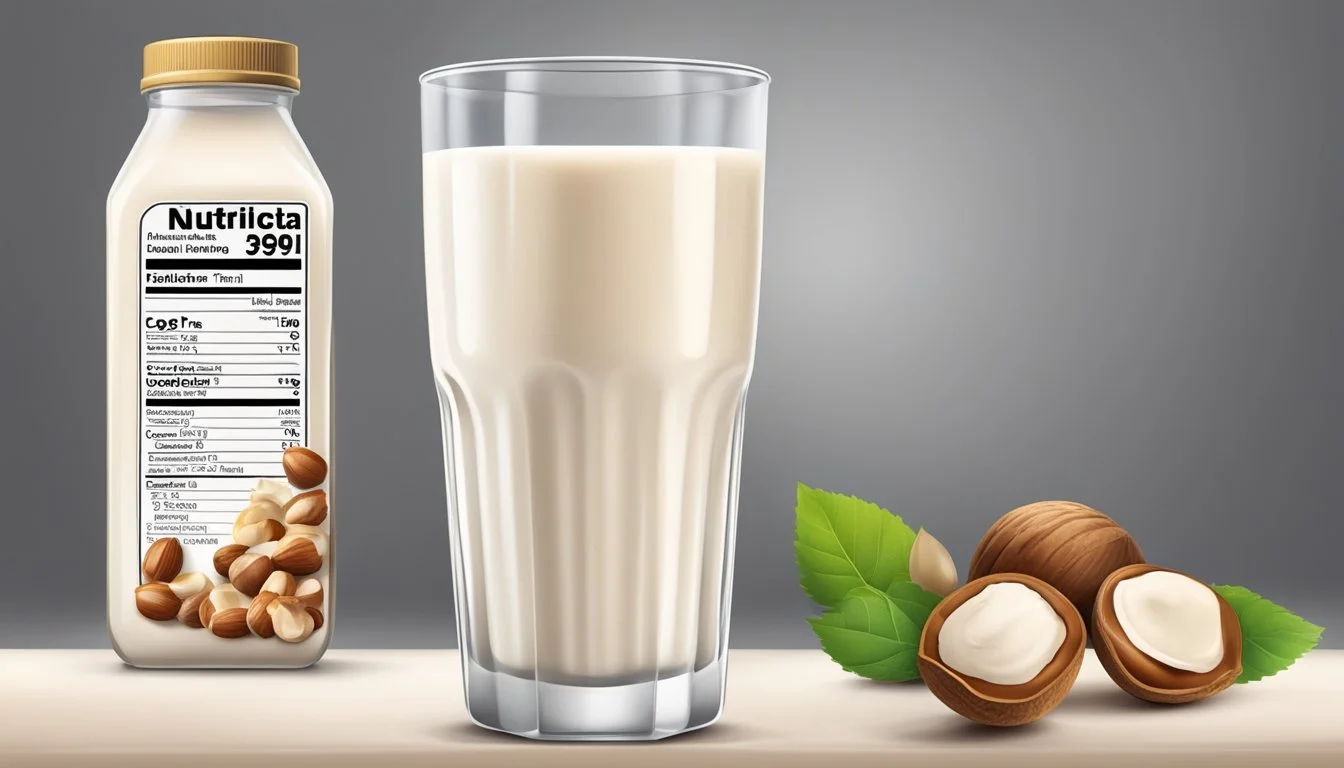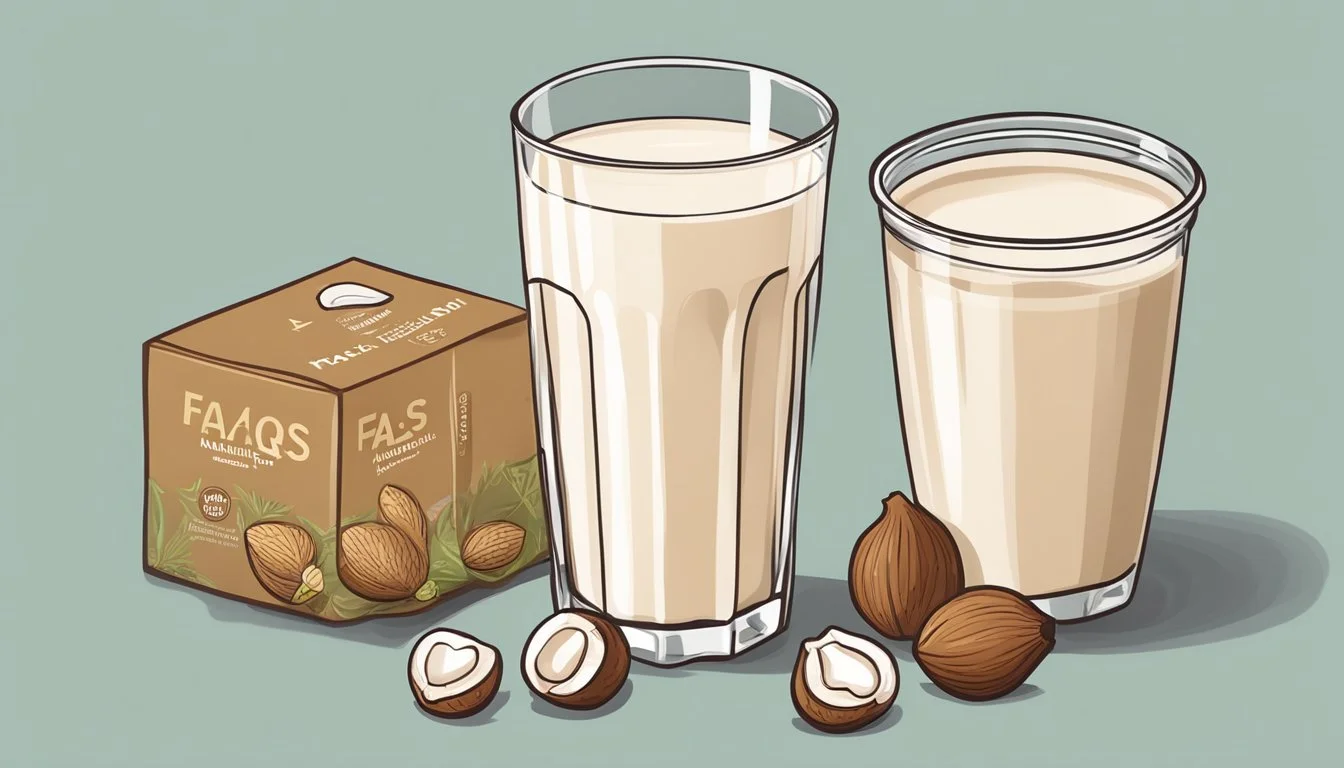Is Hazelnut Milk a Good Alternative for Lactose Intolerance?
Unveiling Milk Substitute Benefits
For individuals with lactose intolerance, finding a suitable milk alternative that caters to their dietary needs while also providing nutritional value is important. Hazelnut milk emerges as a viable choice among the variety of plant-based alternatives. As lactose intolerance involves the body's inability to digest lactose found in cow's milk, many turn to plant-based milks which naturally contain no lactose. Hazelnut milk not only avoids the problem of lactose content but also offers a distinct flavor that can complement various dishes and beverages.
Hazelnut milk is appreciated for its nutty taste and creamy consistency which makes it a popular option for those looking to replace cow’s milk in coffee, baking, and cooking. It is also favored for its vitamin E content, an antioxidant that supports skin health and boosts the immune system. While hazelnut milk does not naturally contain the high levels of protein found in some other milk alternatives like soy, it still holds its own as a nutritious, lactose-free option packed with beneficial fats that can contribute to a well-balanced diet.
As with any alternative, it’s essential to consider the individual nutritional needs and any added ingredients, such as sweeteners or thickeners, that might be present in commercial hazelnut milk products. Ensuring a diet that addresses calcium, vitamin D, and protein intake is crucial when replacing dairy with plant-based substitutes. Considering these factors, hazelnut milk can be an excellent part of a lactose-free diet, offering both taste and nutritional benefits.
Understanding Lactose Intolerance
Lactose intolerance results from the body's inability to fully digest lactose, leading to gastrointestinal symptoms. Accurate diagnosis is essential for managing this prevalent condition, which affects a significant portion of the population across various demographics.
Biological Basis of Lactose Intolerance
Lactose intolerance occurs when the small intestine does not produce enough lactase, an enzyme crucial for breaking down lactose, the sugar found in milk and dairy products. Without sufficient lactase, lactose remains undigested, moving into the colon instead of being absorbed into the bloodstream. Here, bacteria interact with the lactose, causing the common symptoms of lactose intolerance.
Lactase Deficiency: The body's lactase production decreases after infancy, which can lead to varying degrees of lactase deficiency and hence lactose intolerance.
Symptoms and Diagnosis
Affected individuals typically experience diarrhea, gas, and bloating after consuming milk or dairy products. These symptoms can range from mild to severe and usually occur within hours of ingestion.
Diagnosis involves:
Lactose tolerance tests measuring the body's reaction to a liquid high in lactose.
Hydrogen breath tests evaluating the amount of hydrogen produced after lactose consumption, as undigested lactose ferments.
Stool acidity tests, primarily used for children and infants.
Prevalence and Demographics
Lactose intolerance is prevalent worldwide, with varying rates among different ethnic and racial groups. It is less common in people of European descent and more common in those of African, Asian, Hispanic, and Native American descent.
Prevalence rates can be represented as:
Ethnicity Prevalence Rate European Descent +-5-20% African Descent +-70-75% Asian Descent +-90% Hispanic Descent +-50-80% Native American +-80-100%
Demographic factors contributing to lactase persistence or non-persistence include genetics, age, and exposure to dairy products during early development.
Overview of Milk Alternatives
Milk alternatives offer diverse options for those with lactose intolerance, dietary restrictions, or ethical concerns relating to dairy consumption. They provide a range of nutritional profiles and flavors to suit different preferences and nutritional needs.
Types of Milk Alternatives
Soy Milk: Soy milk is a common plant-based milk alternative rich in protein and fortified with vitamins and minerals. It is made from soybeans or soy protein isolate and often contains thickeners and vegetable oils to improve taste and consistency.
Almond Milk: Made from ground almonds and water, almond milk is lower in calories and fat than cow's milk. It is often enriched with vitamins and minerals and is a popular choice for its light, nutty flavor.
Coconut Milk: Coconut milk is derived from the white flesh of mature coconuts. It is higher in fat, particularly saturated fat, and is often used in cooking for its creamy texture and tropical taste.
Rice Milk: A watery milk alternative, rice milk is made from milled rice and water. It's the least allergenic of milk alternatives and is typically sweeter than other nondairy milks.
Hemp Milk: Hemp milk, produced from the seeds of the hemp plant, contains beneficial omega-3 and omega-6 fatty acids. It has a creamy consistency and a slightly nutty taste.
Oat Milk: Oat milk is a creamy alternative with a mild, slightly sweet flavor. It's made by blending oats with water and is naturally high in fiber and beta-glucans.
Nutritional Comparison
The following table illustrates a basic nutritional comparison per one cup (240 ml) serving size among different plant-based milk alternatives compared to cow's milk:
Nutrient Soy Milk Almond Milk Coconut Milk Rice Milk Hemp Milk Oat Milk Cow's Milk Calories Approx. 80-90 Approx. 30-50 Approx. 80-100 Approx. 120 Approx. 60-80 Approx. 120-130 Approx. 90-150 Protein 6-8g 1-2g 0-1g 1g 2-3g 2-4g 8g Fat 4-4.5g 2.5-3g 5-6g (saturated) 2-3g 4-5g 2.5-5g 0-8g (saturated) Carbohydrates 3-4g 1-2g 1-2g 22-30g 1-2g 24-29g 12-13g Fiber 1-3g 0-1g 0-1g 0-1g 0-1g 2-4g 0g Sugar 1-4g 0-1g 0-1g 10-14g 0-1g 7-19g 11-12g
Note: Values can vary depending on the brand and whether the milk is sweetened or unsweetened. Additionally, many plant-based milk alternatives are fortified with vitamins and minerals such as calcium and vitamin D to match the nutritional content of cow's milk.
Nutritional Profile of Hazelnut Milk
Hazelnut milk is a nutritious plant-based alternative to cow's milk, offering a unique composition of macronutrients, a range of essential vitamins and minerals, and a caloric content that can be quite appealing for individuals managing their energy intake.
Macronutrient Content
Protein: Compared to cow's milk, hazelnut milk often contains lower levels of protein.
Fat: It is rich in primarily monounsaturated fats and contains some polyunsaturated fats, including omega-3 fatty acids. The presence of healthy fats is significant, with low levels of saturated fat.
Fiber: Hazelnut milk is also a source of dietary fiber, although the levels can vary depending on whether the milk is homemade or commercially produced.
Vitamins and Minerals
Vitamin E: Hazelnuts are an excellent source of Vitamin E, an antioxidant that is retained in the milk.
Calcium: Often fortified in hazelnut milk to mimic the levels found in cow's milk.
Vitamin D: Similarly, it is frequently fortified with Vitamin D, which aids in calcium absorption.
Vitamin A: Some brands may fortify their hazelnut milk with Vitamin A, mirroring the nutrient profile of whole milk.
Vitamin B: Contains small amounts of B vitamins, but typically less than dairy milk.
Iron: Nuts are generally a good source of iron, and some of this mineral is preserved in the milk.
Magnesium: Hazelnut milk is a natural source of magnesium, which is important for many body processes.
Caloric Considerations
Calories: It is relatively low in calories when unsweetened, making it a suitable choice for low-calorie diets.
Nutritious: While being lower in calories, it still provides a rich assortment of nutrients, making it a balanced choice for those requiring energy-dense foods.
Hazelnut Milk and Lactose Intolerance
Hazelnut milk provides a lactose-free alternative to dairy milk, which can be beneficial for those with lactose intolerance, offering certain digestive health benefits without the discomfort associated with lactose consumption.
Lactose-Free Advantage
Hazelnut milk is naturally free from lactose, making it a suitable choice for the lactose intolerant. The absence of lactose means that drinking hazelnut milk does not require the body to produce lactase, the enzyme necessary to digest lactose found in cow's milk. This is particularly advantageous for individuals whose bodies do not produce enough lactase, leading to the uncomfortable symptoms of lactose intolerance.
Calorie comparison: Hazelnut milk is lower in calories than whole cow's milk, with one cup of unsweetened hazelnut milk containing approximately 50-70 calories.
Fat content: It also has a reduced fat content, with only 2-3 grams of fat per cup.
Due to its lactose-free nature, hazelnut milk can be consumed without the fear of triggering the symptoms associated with lactose intolerance like bloating, gas, or diarrhea.
Digestive Health Benefits
For those seeking to maintain digestive health, hazelnut milk can be a good addition to their diet. Its ease of digestion is a relief for those with sensitive stomachs, as it doesn't result in the typical discomfort that lactose-containing dairy products might cause.
Individuals with lactose intolerance can turn to hazelnut milk to enjoy the creaminess of milk without enduring gastrointestinal distress. While it does not provide the same levels of protein or calcium as cow's milk, its gentle nature on the digestive system makes it a viable option for daily consumption.
Nutritional content: Although lower in protein, hazelnut milk is cholesterol-free and usually fortified with nutrients like calcium and vitamins.
Gastroenterologists may recommend hazelnut milk as part of a lactose-free diet for patients seeking alternatives that are easier on the digestive system.
By switching to hazelnut milk, individuals can enjoy the health benefits of milk consumption without the digestive issues that lactose can cause.
Choosing Hazelnut Milk
When selecting hazelnut milk, it's essential to consider brand differences, the impact of added sugars, and personal allergen concerns.
Comparing Brands and Varieties
Different brands of hazelnut milk offer varied calorie, fat content, and fortification levels. A cup of unsweetened hazelnut milk typically contains 50-70 calories and 2-3 grams of fat. In contrast, some brands may offer fortified versions with additional nutrients such as calcium and vitamin D. When comparing brands, one should look for:
Calories: Ranges from 50-70 for unsweetened options.
Fat content: Generally 2-3 grams per cup for unsweetened variations.
Nutritional fortification: Some brands may fortify their milks with additional vitamins and minerals.
Considerations for Sweetened vs. Unsweetened
Hazelnut milk comes in sweetened and unsweetened varieties. Sweetened versions, including vanilla or other flavors, will have more calories due to the added sugars. The unsweetened varieties offer fewer calories and are preferable for those monitoring their sugar intake. When considering sweetness, keep in mind:
Unsweetened Varieties: Lower in calories, without added sugars, suitable for those reducing sugar consumption.
Sweetened Varieties: Contain added sugars, which increases calorie content, and can come in multiple flavors such as vanilla.
Allergies and Sensitivities
Hazelnut milk is derived from nuts, making it unsuitable for individuals with nut allergies. Additionally, some brands may process their nut milks in facilities that handle other allergens. It's critical to read labels carefully to ensure safety, especially for those with sensitivities. Points to note include:
Nut Allergies: Those with hazelnut or other nut allergies should avoid hazelnut milk.
Cross-Contamination: Check packaging for information on potential cross-contamination with other allergens.
Health Considerations of Hazelnut Milk
Hazelnut milk offers benefits for heart health and weight management while demanding consideration of its nutritional makeup to gauge overall suitability, particularly for those with specific dietary restrictions.
Impact on Heart Health
Hazelnut milk contributes positively to heart health due to its content of healthy fats. Specifically, hazelnuts are a source of polyunsaturated and monounsaturated fats, which are known to help lower LDL (bad cholesterol) levels and increase HDL (good cholesterol), thereby reducing the risk of heart disease. As a plant-based milk alternative, hazelnut milk contains no saturated fats, which are commonly associated with higher cholesterol levels when consumed in excess.
Weight Management Potential
Individuals considering weight loss may find hazelnut milk to be a beneficial component of their diet. With its high fiber content, hazelnut milk can promote a feeling of fullness, potentially reducing overall calorie intake. The milk's richness in insoluble and soluble fibers—60% and 40% respectively—supports this potential by aiding in digestion and satiety. It is important to note, however, that achieving weight loss requires a comprehensive approach that includes a balanced diet and regular physical activity.
Risks and Recommendations
While hazelnut milk may offer several health benefits, consumers must navigate certain risks and recommendations. People with nut allergies should avoid hazelnut milk entirely to prevent allergic reactions. Moreover, consulting a registered dietitian can provide personalized guidance to accommodate individual nutritional needs and health goals. It is recommended that hazelnut milk be consumed in moderation within a balanced diet, ensuring that the potential for excessive calorie intake, particularly from added sugars in sweetened versions, is mitigated.
Culinary Uses of Hazelnut Milk
Hazelnut milk provides a rich, nutty flavor to a variety of culinary creations, from sweet baked goods to savory dishes and even as a delightful enhancement to beverages. Its creamy texture and versatile nature make it an ideal dairy alternative for those with lactose intolerance.
Baking and Desserts
In baking, hazelnut milk substitutes for dairy milk one-to-one, lending a unique flavor to cakes, cookies, and pastries. Its natural sweetness can reduce the need for added sugars. Recipes that call for a creamy texture, such as brownies, benefit from hazelnut milk's richness. Bakers can also mix it with butter to create a moist crumb in dessert breads or use it as a base for custards and puddings.
Cake and Cookie Recipes: Replace dairy milk with hazelnut milk.
Cream-based Desserts: Utilize hazelnut milk for a richer flavor.
Vegan Baking: Pair with plant-based butters for dairy-free options.
Savory Applications
Hazelnut milk has its place in savory dishes as well. It can be integrated into creamy sauces and soups without overpowering other ingredients. Chefs often use it to add depth to the texture of yogurt based sauces or as an alternative in recipes requiring a touch of milk. It's suitable for making dairy-free cheese sauces and can be whisked into dressings and marinades.
Creamy Sauces: Substitute dairy milk with hazelnut milk.
Cheese Sauces: Create vegan versions using hazelnut milk.
Dressings and Marinades: Enhance with a splash of hazelnut milk.
Beverage Enhancer
Hazelnut milk excels as a beverage enhancer. Its smooth and creamy consistency makes it a favorite for coffee enthusiasts seeking dairy alternatives. It steams well for lattes and cappuccinos, and blends seamlessly into smoothies and shakes. For a simple breakfast option, it can be poured over cereal for an extra dimension of flavor.
Coffee and Tea: Froth as a dairy-free option for lattes and cappuccinos.
Smoothies: Blend with fruits and vegetables for a nutrient-rich drink.
Cereal: Use in place of traditional milk for a twist on breakfast.
Environmental and Ethical Perspectives
As the demand for plant-based milks rises, consumers increasingly consider the environmental footprint and the ethical implications of their dairy alternatives. Hazelnut milk production reflects these concerns in its sustainability profile and the ethical practices associated with its production.
Sustainable Production
Hazelnut milk, similar to other plant-based milks, generally has a lower environmental impact compared to traditional cow's milk. In terms of sustainable production, the cultivation of hazelnuts can be advantageous since hazelnut trees:
Are perennial plants, contributing to soil stability and reduced erosion.
Can thrive in diverse climates and soil conditions, reducing the need for resource-intensive farming practices.
Absorb carbon dioxide from the atmosphere, helping to mitigate greenhouse gas emissions.
However, it's crucial to consider the water and land use of hazelnut cultivation. Although hazelnuts require water for irrigation, when compared to the water footprint of almond milk or dairy milk, hazelnut milk generally requires less water, making it a more water-efficient option.
Ethical Considerations in Milk Production
From an ethical standpoint, hazelnut milk presents several advantages. Since it is a vegan and plant-based beverage, it does not involve the raising and milking of animals, which addresses the concerns of:
Animal welfare: Avoids the ethical issues related to animal husbandry and dairy farming.
Dietary restrictions: Suitable for those with lactose intolerance and for consumers following vegan diets.
Moreover, ethical choices in the production process of hazelnut milk include:
Working conditions: Ensuring fair labor practices and the well-being of farm workers during hazelnut cultivation.
Local sourcing: Favoring local supply chains can reduce transportation emissions and support regional economies.
Plant-based milks like hazelnut milk complement the desire of many consumers for products that align with sustainable and ethical considerations while catering to personal health needs and dietary preferences.
FAQs on Hazelnut Milk
Hazelnut milk has become a popular dairy alternative, particularly among those with lactose intolerance. It offers distinct nutritional benefits including vitamins, minerals, and a lactose-free composition.
Addressing Common Concerns
Can people with lactose intolerance consume hazelnut milk? Yes, individuals with lactose intolerance can enjoy hazelnut milk as it is naturally lactose-free, making it a suitable milk alternative.
Nutritional Content: Does hazelnut milk provide enough calcium and other minerals? Hazelnut milk naturally contains minerals, but it is often less rich in calcium compared to dairy milk. However, many brands fortify their hazelnut milk with calcium and vitamins to match the nutritional profile of cow's milk.
Is hazelnut milk safe for individuals with nut allergies? Hazelnut milk is made from hazelnuts, so it is not safe for those with allergies to hazelnuts or other tree nuts.
Expert Opinions and Studies
What do experts say about the protein content in hazelnut milk compared to dairy? Experts point out that hazelnut milk typically contains less protein than cow's milk. Yet, for those who don't rely on milk as a primary protein source, it remains a viable option.
Are there studies supporting the benefits of hazelnut milk? Several studies have highlighted the benefits of nut milks, including hazelnut milk, as part of a balanced diet, particularly for their heart-healthy fats and lack of cholesterol, which may be beneficial for cardiovascular health.







